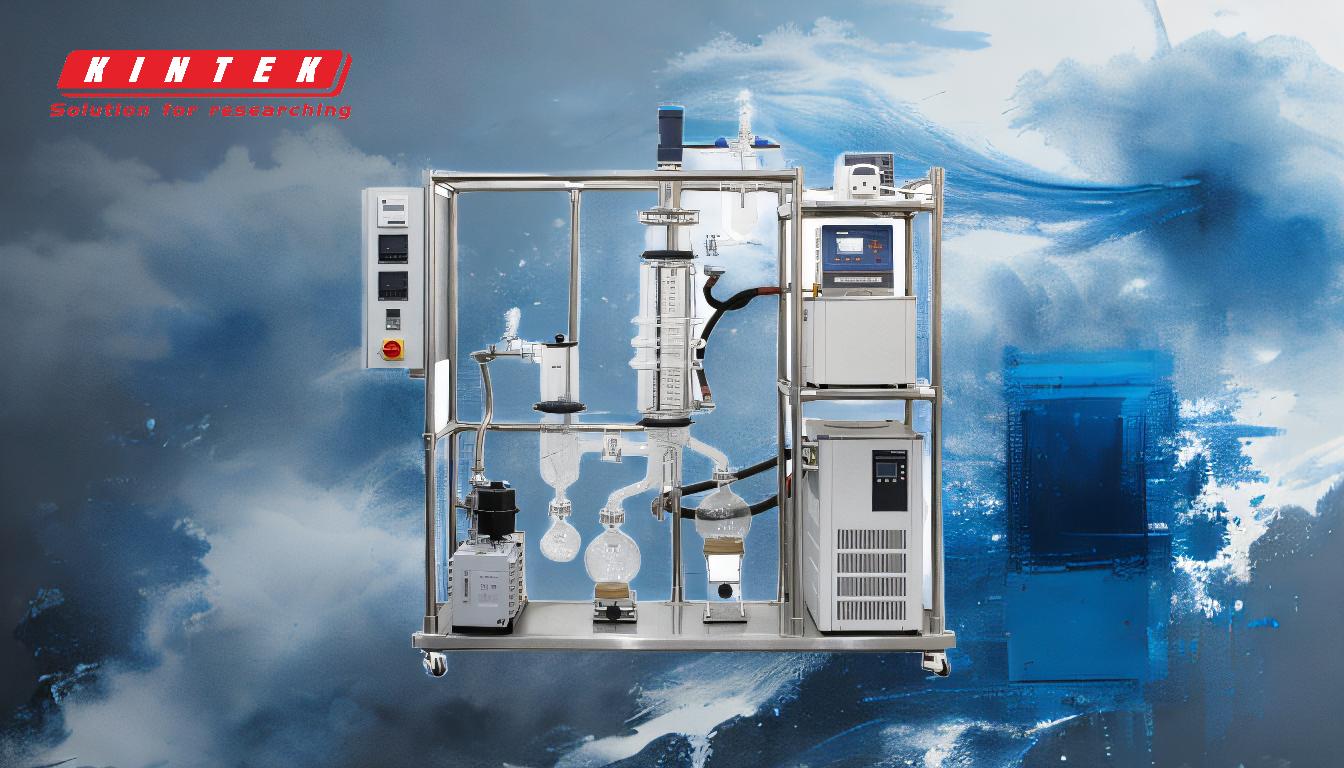Centrifugal distillation is a specialized technique used primarily in industries such as food processing, pharmaceuticals, petroleum, and chemicals for purification and separation processes. It combines the principles of centrifugation and distillation to achieve efficient separation of components under low pressure and controlled conditions. The process involves degassing the feed material, flowing it onto a spinning pre-heated disc, and allowing it to expand and condense on an outer shell for collection. This method is particularly effective for handling heat-sensitive materials and minimizing contamination risks. Additionally, centrifugal evaporation, a related process, uses a vacuum pump and centrifuge to induce solvent boiling from the sample surface downwards, ensuring minimal sample loss and cross-contamination. Both techniques are ideal for processing multiple samples in smaller volumes, though they do not allow for real-time observations during the process.
Key Points Explained:

-
Definition and Purpose of Centrifugal Distillation:
- Centrifugal distillation is a purification and separation technique used in industries like food processing, pharmaceuticals, petroleum, and chemicals.
- It operates under low pressure and short residence times, making it suitable for heat-sensitive materials.
- The process involves degassing the feed material and flowing it onto a spinning pre-heated disc, where it expands and condenses on an outer shell before being collected.
-
Mechanism of Centrifugal Distillation:
- The feed material is first degassed to remove any volatile components.
- It is then introduced onto a spinning disc that is pre-heated, causing the material to expand.
- The expanded material condenses on the outer shell of the distillation unit, where it is collected for further processing.
-
Advantages of Centrifugal Distillation:
- Low Pressure Operation: The process operates under low pressure, which is beneficial for heat-sensitive materials.
- Short Residence Times: The short residence times reduce the risk of thermal degradation.
- Minimized Contamination: The closed system minimizes the risk of cross-contamination.
- Efficiency: The technique is efficient for processing multiple samples in smaller volumes.
-
Centrifugal Evaporation as a Related Process:
- Centrifugal evaporation is a related technique that uses a centrifuge chamber paired with a vacuum pump and solvent condenser.
- The vacuum pump reduces the pressure within the chamber, lowering the solvent's boiling point.
- The centrifuge rotor spins the chamber, creating a pressure gradient that allows the solvent to boil from the top-down.
- The solvent vapor is then condensed and collected, leaving behind the concentrate.
-
Applications of Centrifugal Distillation and Evaporation:
- Food Processing: Used for the purification of edible oils and other food products.
- Pharmaceuticals: Ideal for the purification of active pharmaceutical ingredients (APIs) and other sensitive compounds.
- Petroleum and Chemicals: Utilized for the separation and purification of various chemical compounds.
-
Limitations of Centrifugal Distillation and Evaporation:
- Observation Limitations: These techniques do not allow for real-time observations during the process.
- Volume Constraints: While efficient for smaller volumes, they may not be as effective for large-scale operations.
-
Comparison with Traditional Distillation Methods:
- Pressure and Temperature Control: Centrifugal distillation offers better control over pressure and temperature, making it suitable for sensitive materials.
- Contamination Risks: The closed system of centrifugal distillation minimizes contamination risks compared to traditional methods.
- Efficiency: Centrifugal methods are generally more efficient for small-scale, high-precision applications.
By understanding these key points, equipment and consumable purchasers can better evaluate the suitability of centrifugal distillation and evaporation techniques for their specific needs, ensuring optimal outcomes in their respective industries.
Summary Table:
| Aspect | Details |
|---|---|
| Definition | Combines centrifugation and distillation for purification and separation. |
| Key Industries | Food processing, pharmaceuticals, petroleum, and chemicals. |
| Advantages | Low pressure, short residence times, minimized contamination, high efficiency. |
| Applications | Purification of edible oils, APIs, and chemical compounds. |
| Limitations | No real-time observation; limited to smaller volumes. |
| Comparison to Traditional Methods | Better pressure/temperature control, lower contamination risks, higher efficiency for small-scale applications. |
Discover how centrifugal distillation can optimize your processes—contact our experts today!











